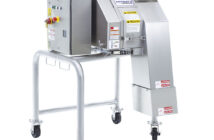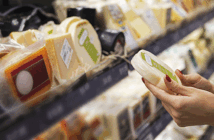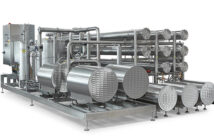A US study from Purdue University says that taking just a few seconds to cool freshly laid eggs would add weeks to their shelf-life.
The rapid cooling process, developed by Kevin Keener, a Professor of Food Science, uses liquid carbon dioxide to stabilise the proteins in egg whites so much that they could be rated AA – the US’ highest grade for eggs – for 12 weeks. Earlier research showed that the same cooling technology could significantly reduce occurrences of salmonella illnesses.
Eggs cooled under current methods lose the AA grade in about six weeks, Dr Keener says.
“There isn’t any statistical difference in quality between eggs as measured by Haugh units [which measure an egg white’s protein quality]just after laying and rapidly cooled eggs at 12 weeks,” he says. “This rapid cooling process can provide a significant extension in the shelf-life of eggs compared to traditional processing.”
Dr Keener’s results, published in the journal Poultry Science, also show that membranes surrounding the eggs’ yolks were maintained for 12 weeks when eggs were rapidly cooled. That membrane is a barrier that keeps harmful bacteria from reaching the yolk, a nutrient rich reservoir that bacteria could use as a food source.
“The structural integrity of the yolk membrane stays strong longer, which may provide a food safety benefit,” Dr Keener says. “The membrane being stronger would be another defence against bacterial invasion, such as salmonella.”
The rapid cooling technology takes liquid carbon dioxide and turns it into a ‘snow’ to rapidly lower the eggs’ temperature. Eggs are placed in a cooling chamber and carbon dioxide gas at about minus -43.3°C is generated. The cold gas is circulated around the eggs, and forms a thin layer of ice inside the eggshell. After treatment, the ice layer melts and quickly lowers an egg’s internal temperature to below 45°F, the temperature at which salmonella can no longer grow.
Dr Keener’s previous research showed that the carbon dioxide in bicarbonate form significantly increases the activity of lysozyme, an enzyme in the egg white that has bactericidal properties.
Traditionally, eggs are at more than 100°F when placed into a carton. Thirty dozen eggs are then packed in a case, and 30 cases are stacked on to pallets and placed in refrigerated coolers. The eggs in the middle of the pallet can take up to 142 hours – nearly six days – to cool to 45°F, Dr Keener says.
He explains that a 2005 US government report showed that if eggs were cooled and stored at 45°F within 12 hours of laying, there would be about 100,000 fewer salmonella illnesses from eggs in the country each year. Rapid cooling also could increase the ability to export eggs to places where this isn’t possible today.
“You could send eggs anywhere in the world if you could get even eight weeks of shelf-life at AA quality. We’re seeing 12 weeks,” Dr Keener says.
“Right now, you can’t ship eggs anywhere in the world and expect to retain that quality.”
He adds that, with additional funding, he would continue to study the benefits of rapid cooling, including inoculating the inside of shell eggs with salmonella and examining how other proteins in the whites and yolks of eggs are affected.
Dr Keener is a technical consultant to the American Egg Board and a member of the United Egg Producers Scientific Advisory Panel. His work was funded by Purdue University and gift funds.





























































































